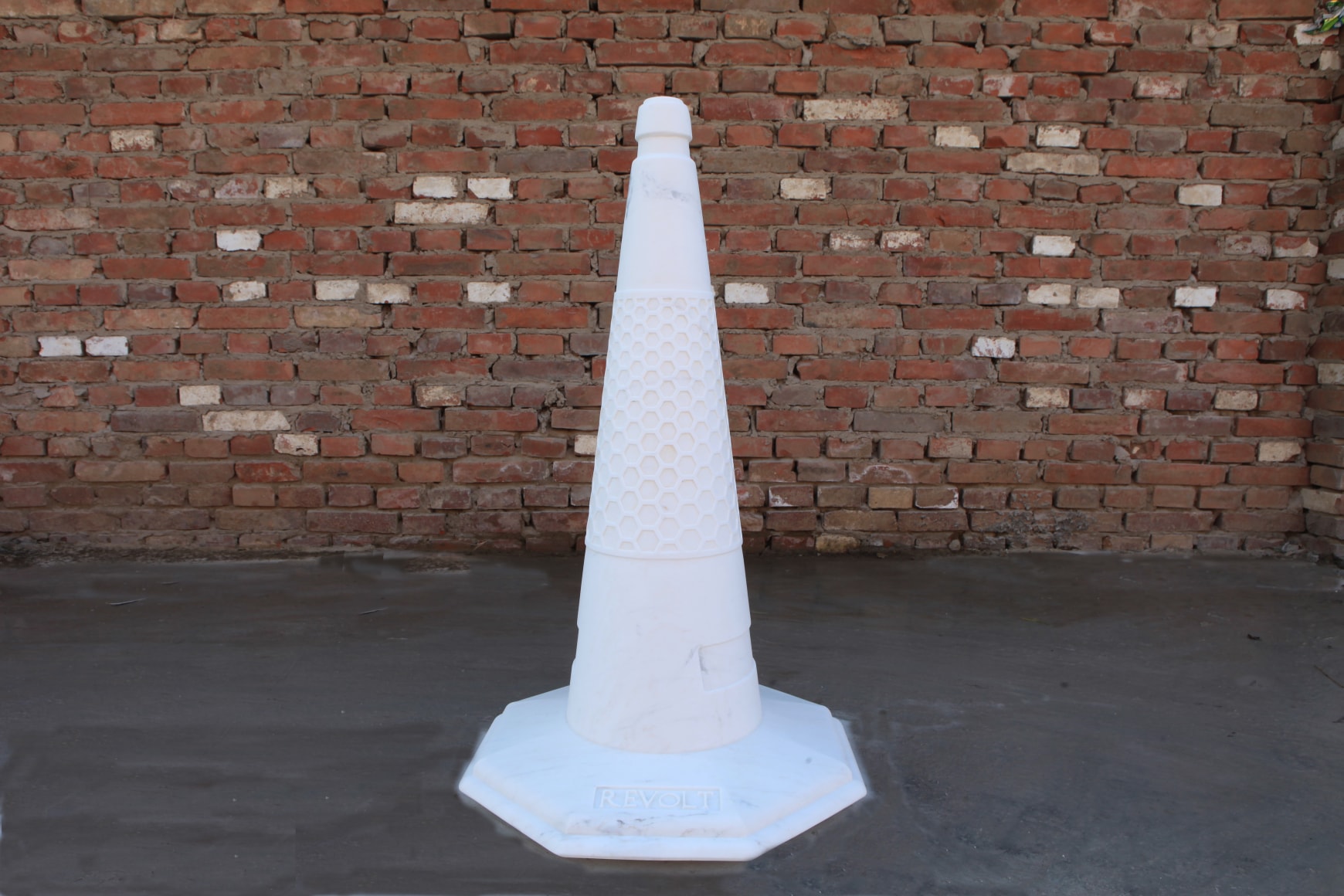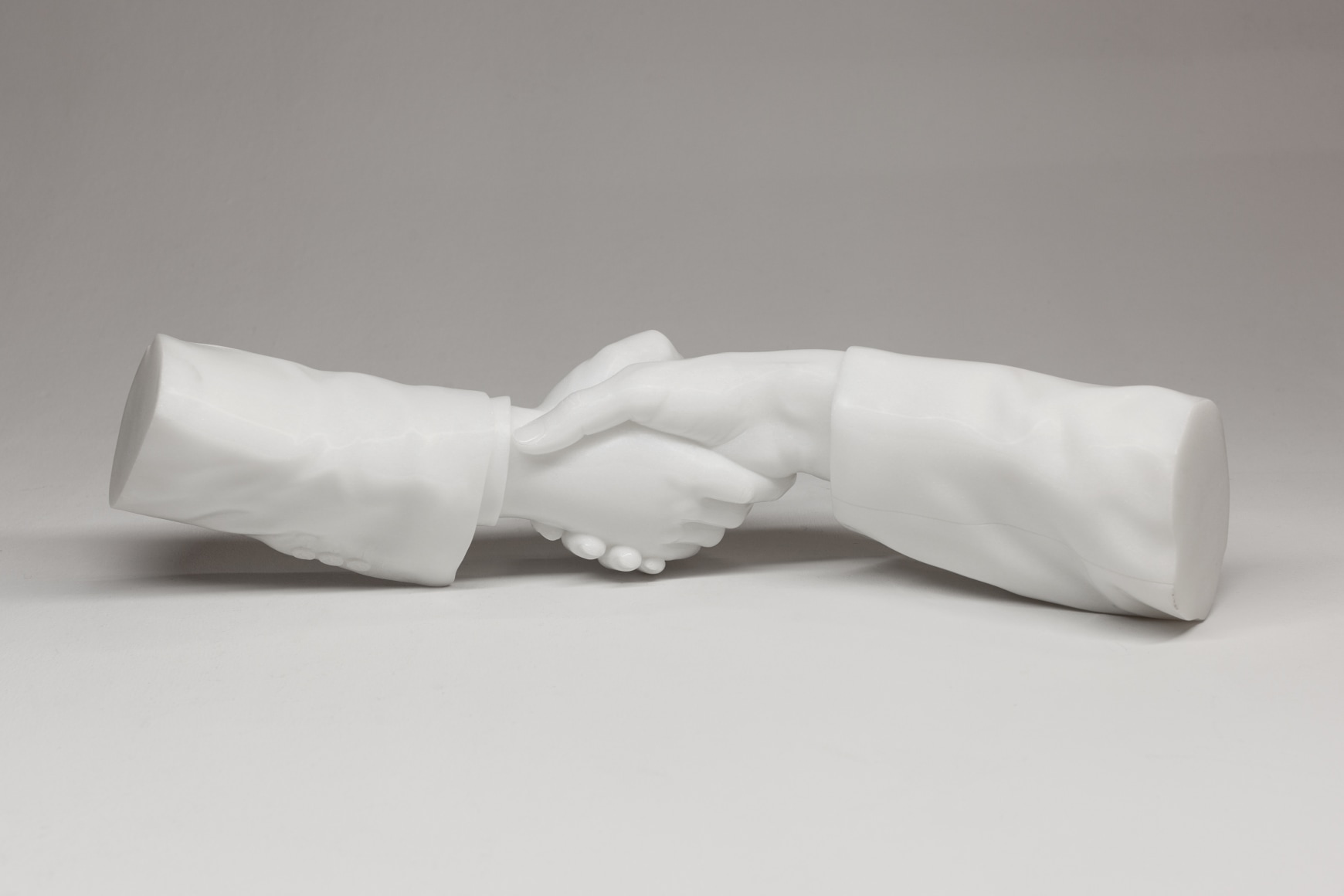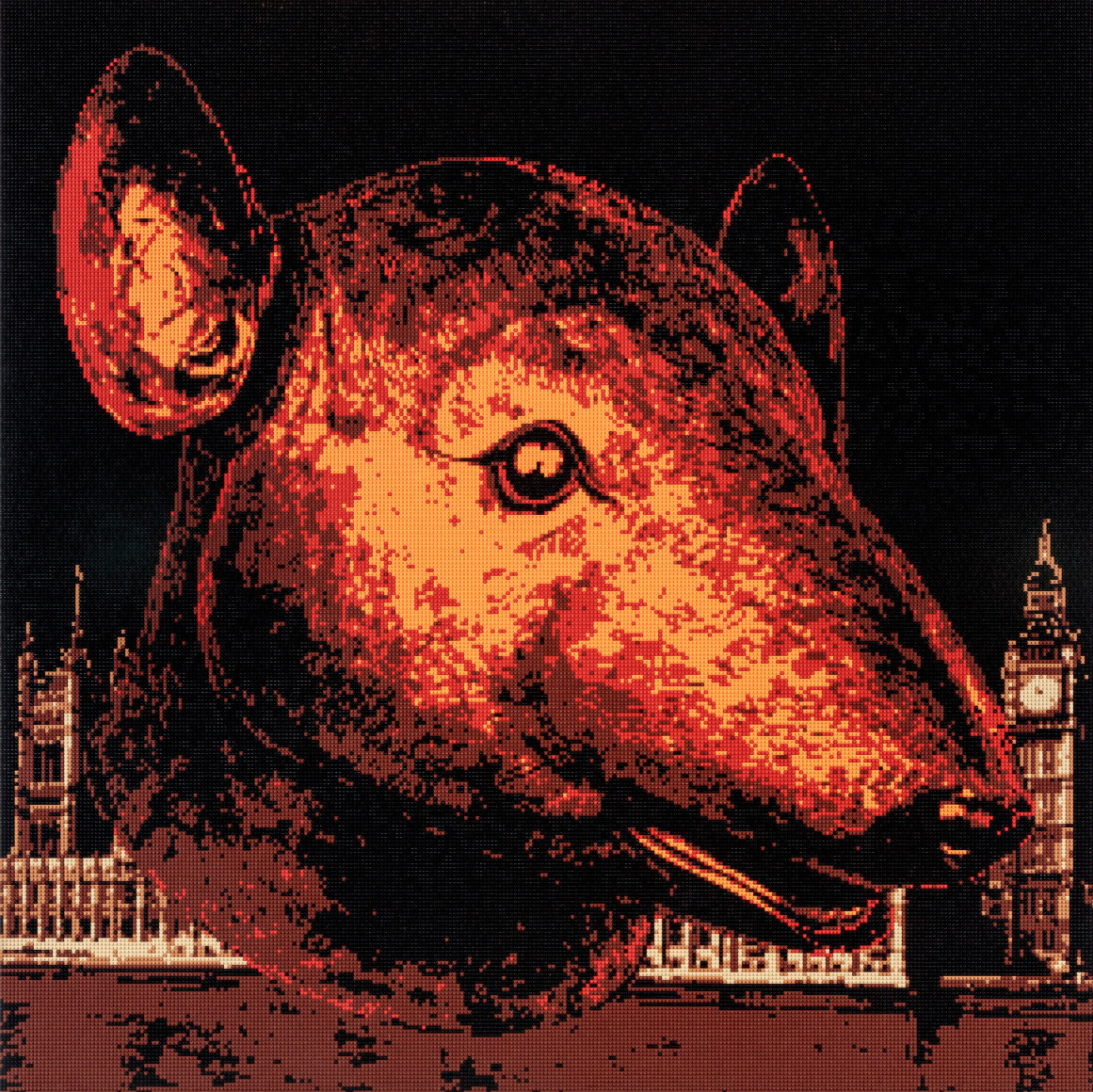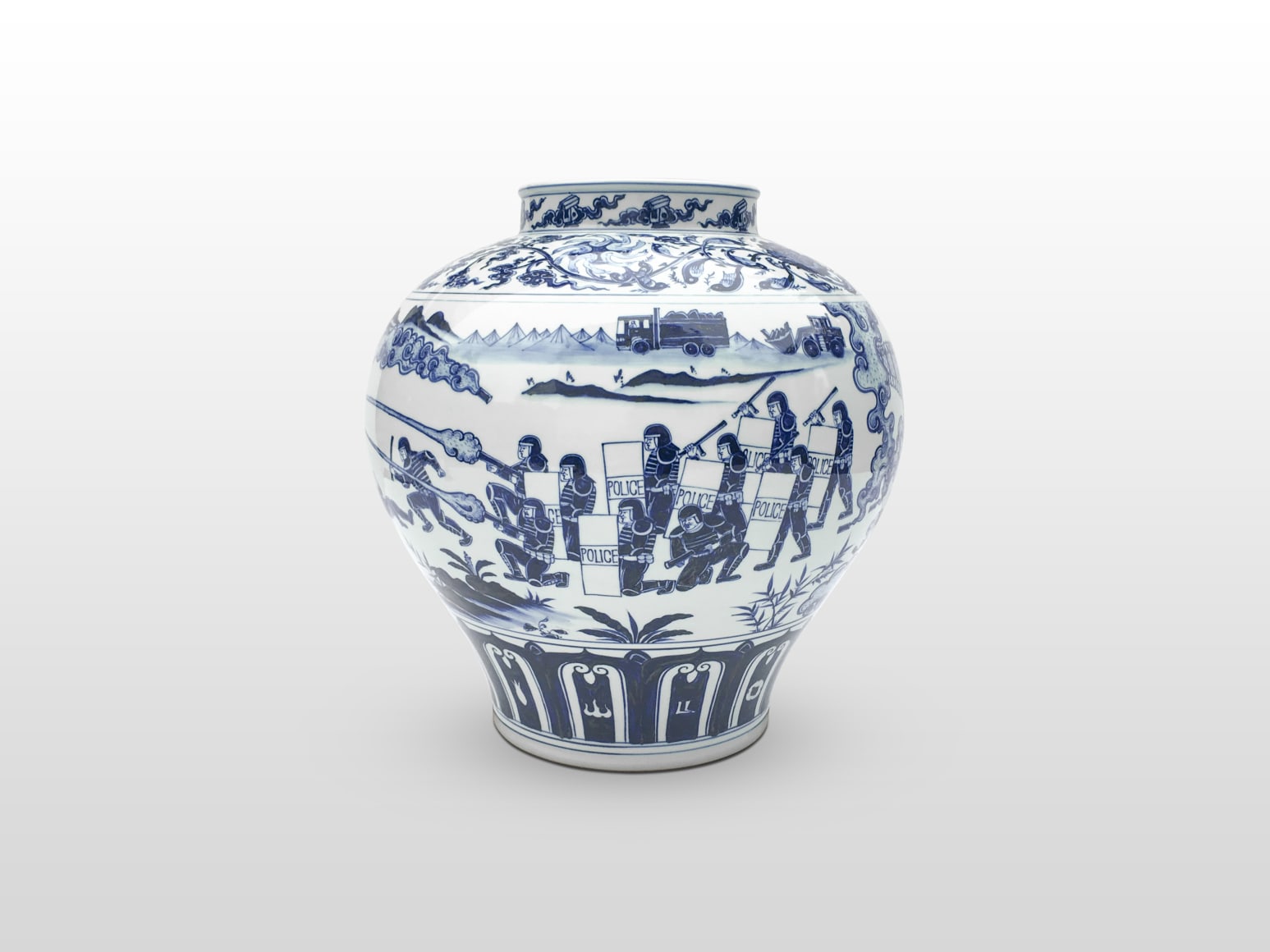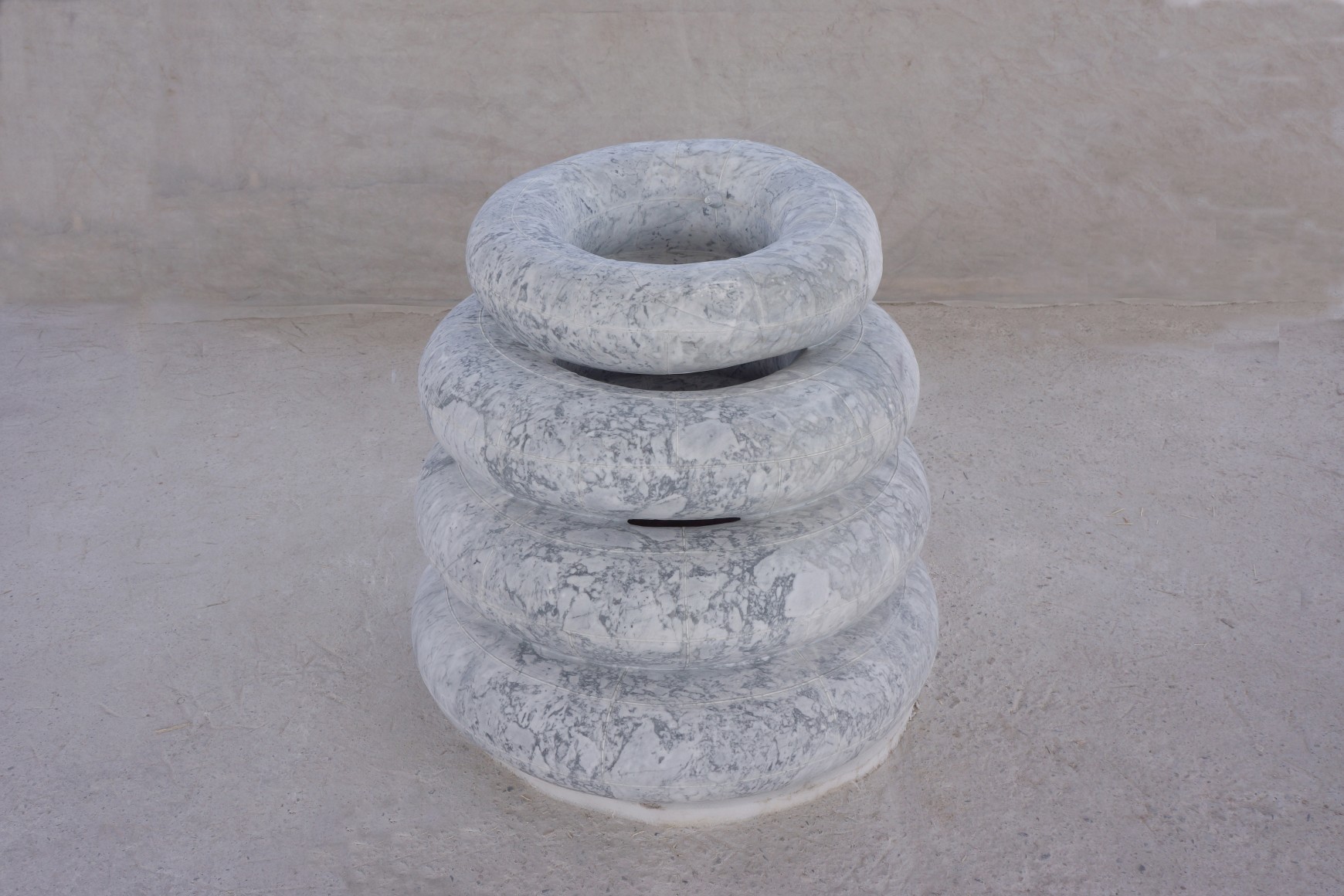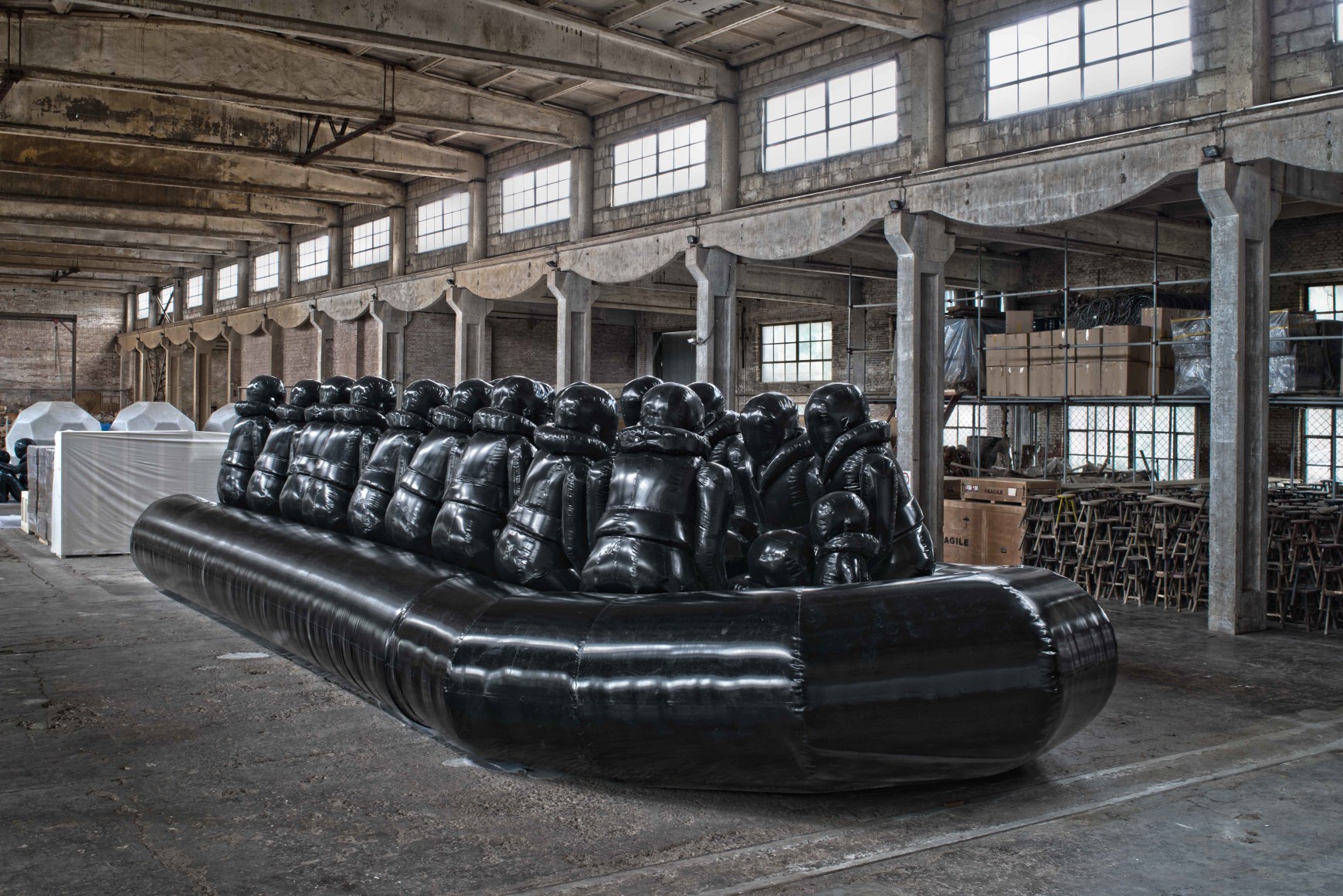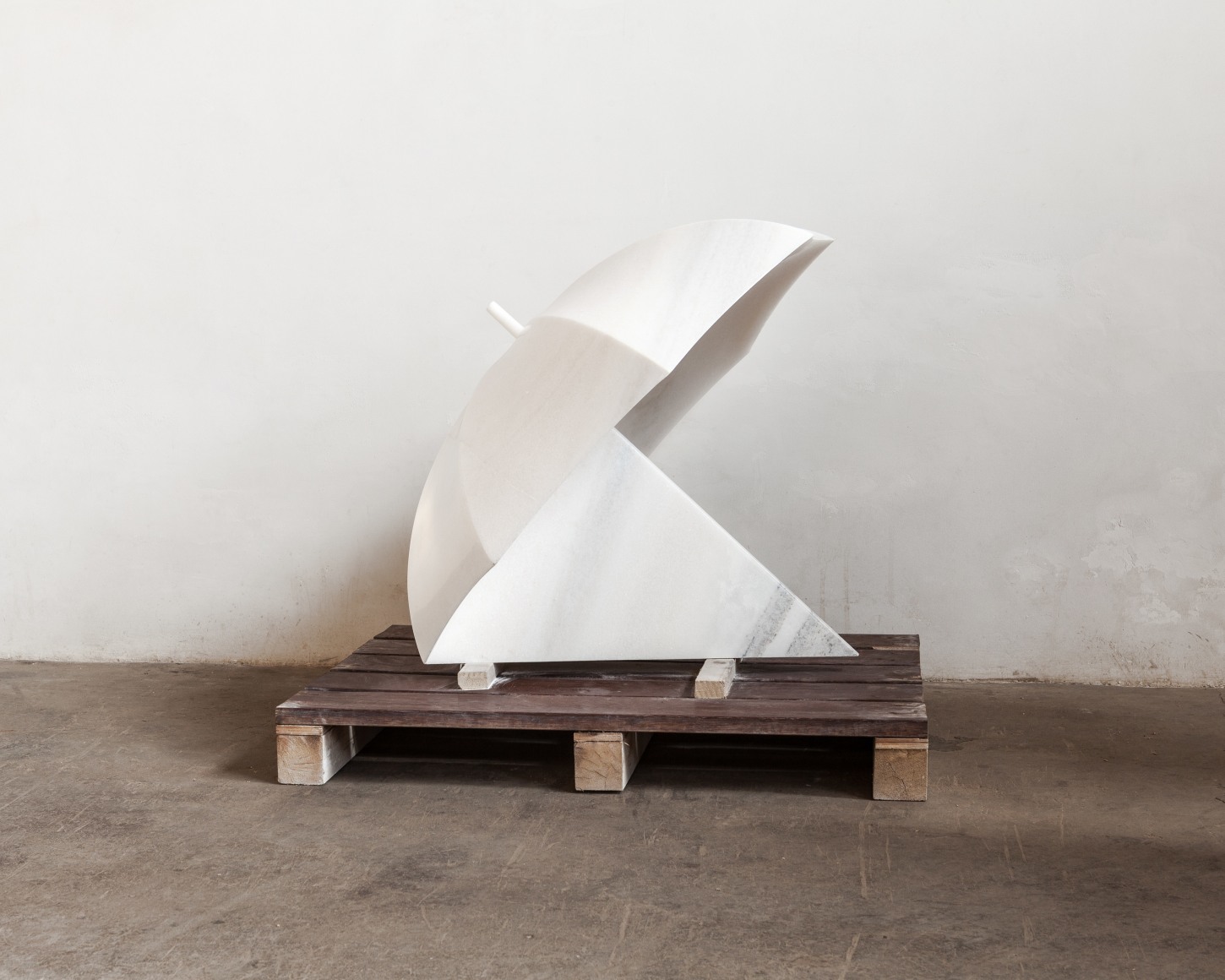Chambers Fine Art is pleased to announce that it will be exhibiting recent works by Ai Weiwei nine years after the last major exhibition of Ai Weiwei’s work in Taiwan, Ai Weiwei, Absent, at the Taipei Fine Arts Museum in 2011. The 2011 exhibition was titled Absent as at this time Ai was prevented from leaving China and remained unable to do so until 2015 when he established a studio in Berlin.
The Taipei presentation presents several of the most important themes in Ai’s work in the last decade, above all his overwhelming concern with human rights and since 2015, the refugee crisis recently described as “the most pressing moral concern of our times: migration.” One of first undertakings after Ai’s passport was returned in 2015 was a trip to the Greek island of Lesbos, one of the primary destinations for refugees prior to traveling to other destinations in Europe.
Tyre, 2017, a marble replica of four truck-tire inner tubes that are often used a life- buoys by refugees whose vessels capsized, derives from Ai’s first days in Lesbos when he saw them as well as other personal items washed up on beaches. Ai’s choice of everyday objects for many of his sculptures was initially inspired by the Readymades of Marcel Duchamp that he discovered in the 1980s. Unlike Duchamp, however, who was indifferent to the objects he selected, Ai chooses objects that have unmistakable political and humanitarian connotations.
Shelter (2014) and Revolt (2019) are related to the massive demonstrations that engulfed Hong Kong in 2014 and resumed in the summer of 2019. Shelter refers to the umbrellas that were ubiquitous during the Occupy Central movement in Hong Kong in 2014, so common that it is also referred to as the Umbrella Movement. Frequently yellow, these umbrellas were used not only to protect the demonstrators from the sun but also from pepper spray and tear gas.” As remarked upon at the time, “the image is a poignant one, and emphasizes the asymmetry of force: an innocuous household object held up against helmeted police officers welding poisonous substances for crowd control.”
Revolt, a replica of a traffic cone, refers to the recent street demonstrations in Hong Kong. Through a simple modification they were used as shields against tear gas, far more effective than simply tossing them back. When tear gas shell cones land demonstrators place traffic cones on top of them in order to stop the gas spreading, then pour water into them to douse the gas.
The installation is completed by three other works. Blue and White Porcelain Vase (War) 2017 is from an important series of works in which the decorative motifs typical of classical Chinese porcelain have been replaced with imagery derived from Ai’s personal experience with the refugee crisis. Ai first used bicycles in his work in 2003 and since then has used them in increasing numbers in site-specific installations, notably in Taipei in 2011. In Forever (Stainless Steel Bicycles in Silvery, duo) 2013 Ai has moved away from the famous Forever brand that he used at the beginning and deprives them of saddle, handlebar and tires. Although Hands Without Bodies, 2018, carved in white marble appears to be less obviously political than Shelter and Revolt, the ubiquitous gesture is not only used in personal encounters but also in political and legal situations.
Zodiac (Rat), 2018, was selected to complete the installation. Executed in Lego bricks, it is from a set of twelve panels based on the animal heads from the Zodiac fountain created in the 1700s for Yuanming Yuan, an imperial retreat just outside Beijing. First in the twelve-animal cycle, in China the rat is a symbol of intelligence, innovation, industry, and wealth although in fables and paintings it is often seen in a negative light as an emblem of corrupt officials or profiteer.
In the public space at Taipei Dangdai, Taiwanese collectors will have an opportunity to view a major installation by Ai Weiwei. The rectangular space covered with Odyssey wallpaper (2016) provides an unforgettable background to Law of the Journey, a prototype developed in 2016 for a larger installation exhibited at the National Gallery in Prague in 2017.
In Ai Weiwei’s practice, wallpaper has become an important vehicle for the wide distribution of his artistic concepts rather than serving the decorative function that it has typically had since it was first used in the 1500s. In preparation for the documentary Human Flow (2017), Ai traveled extensively to refugee camps and contested zones interviewing hundreds of individuals. In Odyssey 2016 he gives a historical dimension to this contemporary tragedy by relating it to the journey undertaken by Odysseus, the hero of the Greek poet Homer’s epic poem, the Odyssey. The six themes of the wallpaper – War, Ruins, Journey, Crossing the Sea, Refugee Camps, and Demonstrations – are visualized in imagery that combines references to early Greek and Egyptian art with images taken from the Internet and the artist’s own experience.
Looming over the spectator is Law of the Journey, an inflatable boat filled with figures inspired by the boats used by refugees in dangerous sea journeys to reach Europe. As Ai observed such vessels arriving in Lesbos in 2016 he made several videos documenting their arrival as well as one, On the Boat, in which he stands alone in a partially submerged, drifting vessel, seemingly ruminating on the unimaginable experiences of so many thousands of refugees, many of whom do not survive. In Law of the Journey he envisions such journeys on a monumental scale, emphasizing the dangers faced by the desperate passengers by executing it in inflatable PVC, the same material as many of the improvised vessels. While Ai’s films document the horrifying experiences of individual refugees, Law of the Journey translates these into a generalized indictment of the political forces that have occasioned this global disaster.

